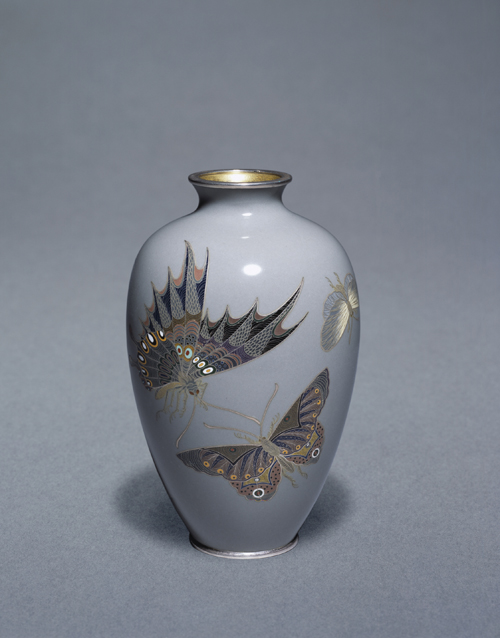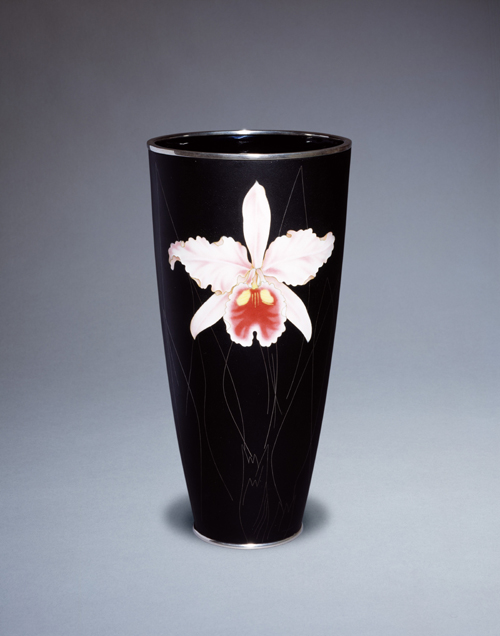
What do Bolton Wanders FC and a stunning collection of Japanese objet d’art have in common? The improbable answer is Mr Edwin Davies CBE, Chairman of the football club and collector of some exquisite vases, bowls and dishes recently gifted to the V&A, and now in steel city as part of Museums Sheffield’s exhibition The Seven Treasures.
Perhaps a touch more grown-up than some of the displays at the family-friendly Weston Park, this exhibition benefits from a wealth of stunning Japanese enamels from the V&A collection donated by Mr Davies on the understanding that they would be toured to the regions. Covering a period from 1880 – 1960, these beautiful objects tell the story of the golden age of cloisonné in the far east – an art in which craftsmen and women pain-stakingly use metallic wires to create patterns and illustrations made-up of compartments, later inlaid with enamels of striking colours.
Through the years these works became increasingly sophisticated and some of the most breath-taking pieces in the show display novel innovations in the form – a pair of vases from turn of the century Nagoya depict goldfish with wetly shimmering scales, on a different pair of vases from the same period two snow white cranes stand out in relief against the matt black background. An unassuming floral bowl made later in the 20th century reveals a secret luminescence when viewed from below due to the French plique-a-jour technique which dissolves portions of the backing to leave the translucent enamel.

Exhibition & Display Curator, Rowena Hamilton, has put these show stoppers within the context of Museums Sheffield’s own collection including graphic works on paper illustrating the Japanese aesthetic and some European examples of cloisonné seen in everything from hairclips to alter pieces. Also from the home-grown collection is a crowd-pleaser in the shape of samurai swords with various accoutrements displaying early examples of enamelling. Next to these is a fearsome samurai helmet, loaned from Manchester Museum bedecked with human hair dating back to the 1800s – sure to enthuse younger visitors who may not immediately see the charms of pretty vases. There’s a genuine connection however, illustrated by a case dedicated to Kaji Tsunekichi a former samurai who, after the fall of the Shogun in 1868 and the removal of the samurai class, turned his battle-weary hands to cloisonné.
There’s an intriguing Sheffield link too. In one corner we find a picture of moustachioed industrialists at Vickers the gunmakers once based at River Don Works. Some of these gents had been invited to go over to Japan when it opened up in the late 1800s as consultants to help the country catch-up on it’s industrial development. They brought home toys and ornaments for their families, which now reside in the city’s collection.
You may not think the intricate delicacy of Japanese enamelling is your style but the sheer variety and exquisite craftsmanship of the objects in the exhibition demands admiration. There’s also plenty for young visitors to do beyond pressing their faces up against the glass cases, including a nature trail to spot the various flora and fauna on the surface of the vases, as well as origami samurai helmet making.
The Seven Treasures is a free exhibition running at Museums Sheffield: Weston Park until 2 June 2013